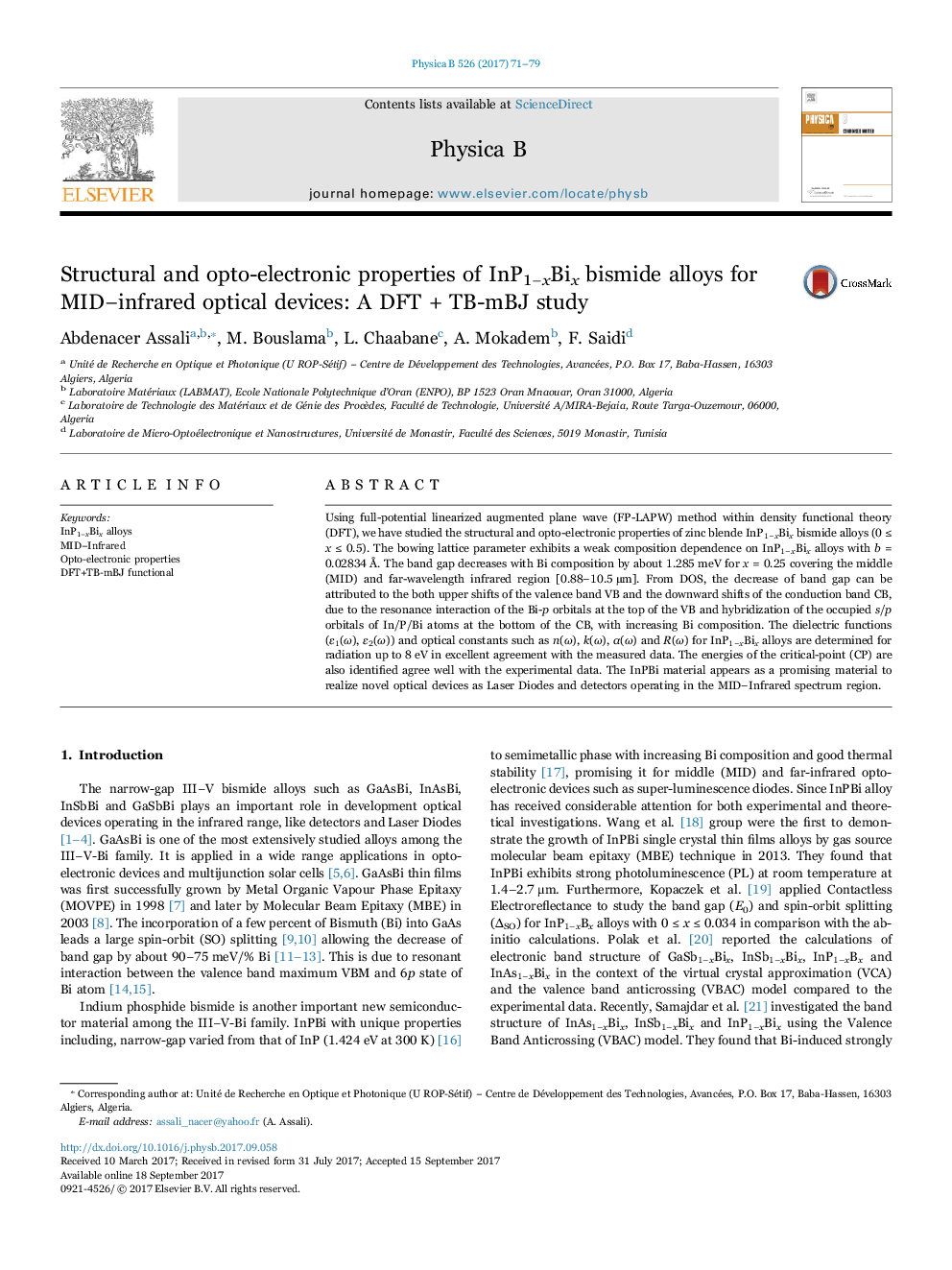| Article ID | Journal | Published Year | Pages | File Type |
|---|---|---|---|---|
| 5491703 | Physica B: Condensed Matter | 2017 | 9 Pages |
Using full-potential linearized augmented plane wave (FP-LAPW) method within density functional theory (DFT), we have studied the structural and opto-electronic properties of zinc blende InP1âxBix bismide alloys (0 ⤠x ⤠0.5). The bowing lattice parameter exhibits a weak composition dependence on InP1âxBix alloys with b = 0.02834 à . The band gap decreases with Bi composition by about 1.285 meV for x = 0.25 covering the middle (MID) and far-wavelength infrared region [0.88â10.5 µm]. From DOS, the decrease of band gap can be attributed to the both upper shifts of the valence band VB and the downward shifts of the conduction band CB, due to the resonance interaction of the Bi-p orbitals at the top of the VB and hybridization of the occupied s/p orbitals of In/P/Bi atoms at the bottom of the CB, with increasing Bi composition. The dielectric functions (ε1(Ï), ε2(Ï)) and optical constants such as n(Ï), k(Ï), α(Ï) and R(Ï) for InP1âxBix alloys are determined for radiation up to 8 eV in excellent agreement with the measured data. The energies of the critical-point (CP) are also identified agree well with the experimental data. The InPBi material appears as a promising material to realize novel optical devices as Laser Diodes and detectors operating in the MIDâInfrared spectrum region.
